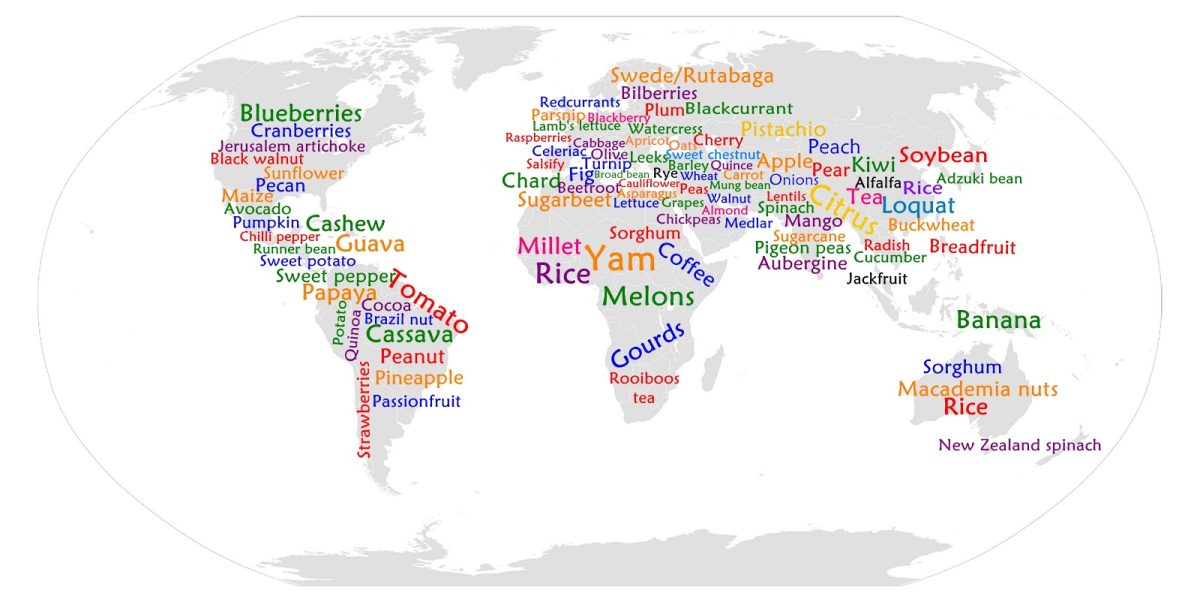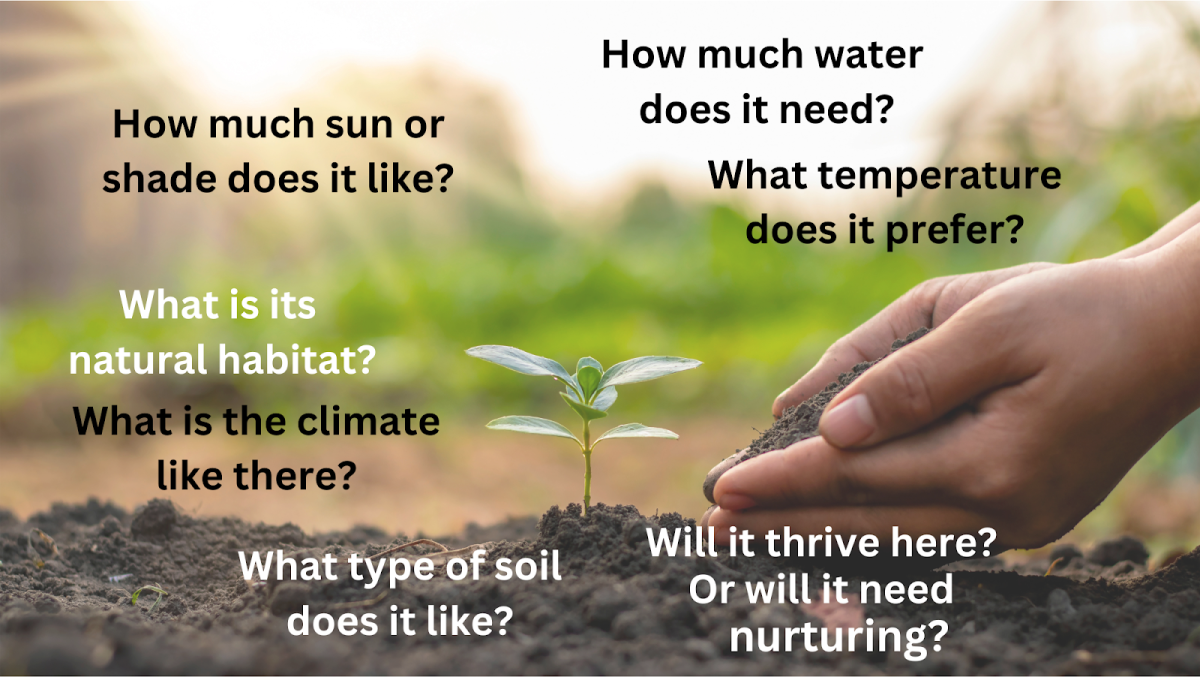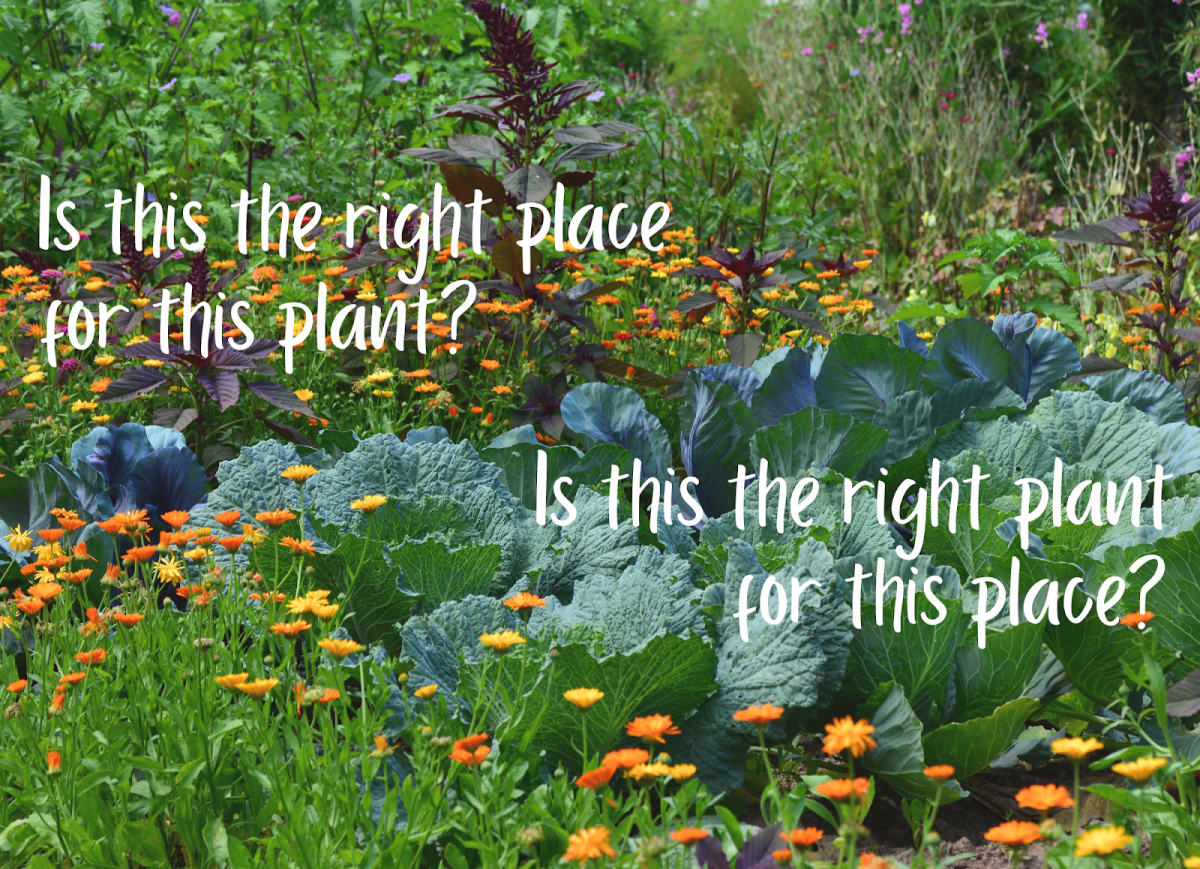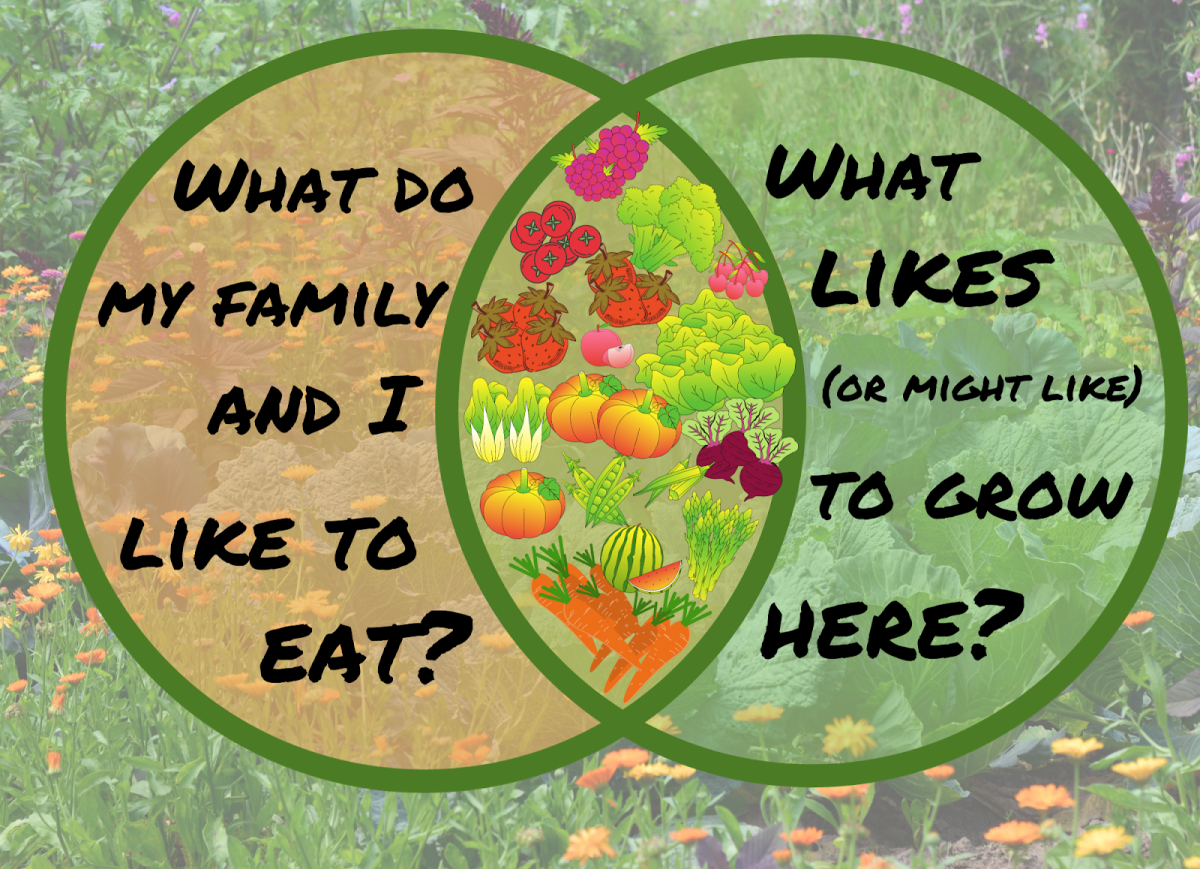By Marit Parker
Can I grow this here? This is probably one of the most common questions in gardening forums!
The first thing is to find out more about the plant, and more about your garden. If your garden provides similar conditions to what the plant needs, then it will probably grow happily in your plot.
Knowing where a plant is native can tell us a lot about its ideal growing conditions and give us clues as to why it does – or doesn’t – thrive in your area.
I dove deep, did a bunch of research, and made this map for you. Use it to see where your favorite foods come from, and to find out what foods come from where you live:

What’s your favourite meal?
Mapping a meal to find out what conditions the different fruits, vegetables and herbs prefer can be quite an eye-opener.
For example, one of my favourite meals is leek and potato soup. It’s one of the national dishes of Wales and leeks are our national vegetable. Leeks and potatoes grow well here, along with the third ingredient, onions.
But are they Welsh vegetables? Nope.
In fact, leeks are originally from the Middle East, onions are from Asia, and potatoes of course are from the Andes.
These particular vegetables have been grown in several different parts of the world for hundreds of years, and over that time seeds, and seed potatoes, have been selected so that different varieties suit different local conditions. Choosing local varieties can make a big difference to how well a plant does in your garden.
But maybe you want to try growing vegetables and fruits that aren’t normally grown in your region.
I mean, wouldn’t it be great to grow everything to make hummus in Scotland or Alaska?
Or to eat homegrown blackberry and apple crumble in Ghana or Belize?
Some plants can grow well in unexpected places, but generally the more different the climate and geography, the less likely it is to thrive, or even survive. There are good reasons why staple foods vary according to climate and geography. Potatoes and rice need very different conditions!
Don’t forget that plants that are native to your part of the world may also have specific requirements that don’t exist in your garden.
Talk to your neighbours and notice what is popular with local gardeners, and find out more about the particular conditions in your area.
Notice the changes in nearby gardens in the different seasons. What do local gardeners prioritise at different times of the year? What are they growing and what is thriving and abundant in different seasons?
Notice what’s already growing in your own plot too. A rule of thumb for new gardens is to observe them for a whole year, so that you see them through every season. Noticing what is flourishing – and what doesn’t look too happy – at different times of the year is an important part of this (along with all your observations of sunlight, shade, water and so on).
At the same time, find out more about the different plants you want to grow – what are their main likes and dislikes?
Here are some key questions to help answer the all-important question, can I grow this here?

If some of the answers to these questions are “no”, then could some small changes make a big difference? Small changes might be things like adding well-rotted manure to the soil, or adjusting your watering system, or tweaking the microclimate, for example by planting it next to a taller plant or a wall that will provide some shelter from the wind or a bit of a sun trap – or some shade. For example, in a dry garden, it might be possible to grow mint, which likes damp conditions, if you plant it right next to the water butt so it benefits from any leaks (and is easy to water regularly).
Or will the plant you want to grow be a “special needs” plant that will consume more resources for less yield? The question then is can you and do you want to cater to these?

Making sure plants are in the right place means they are more likely to look after themselves and not need a lot of nurturing. Thinking ahead when designing can save a lot of time, work, and headache later.
But you also want to grow plants that you know that you and you family will eat!
Deciding what to grow in your garden can mean finding a compromise between what you want to grow and what will thrive in your garden.

Where these two overlap is a good start to a plant list. These are the plants that will thrive in your garden’s microclimate and conditions – and seeing your family and friends enjoying eating them is great positive feedback! It will encourage you to grow more, and as you become more experienced and get to know your garden really well, you can expand the list of plants you grow.
Have fun!



